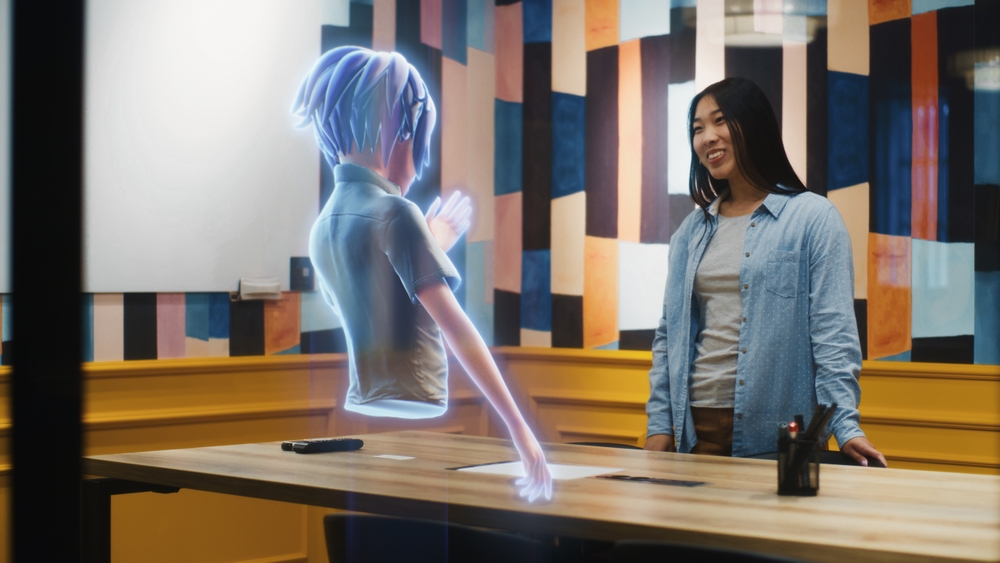Are Holograms the Future of Keynote Speaking?
Keynote speeches have always been about presence, persuasion, and performance. A great keynote can electrify a room, shift company culture, or even spark an industry-wide trend. As explored in this piece on the strategic business of landing a keynote spot, the value of a keynote often extends far beyond the stage. But what happens when the speaker isn’t actually in the room—when the person on stage is a hologram?
With rapid progress in holographic projection, AI-driven avatars, and immersive conference technology, the future of keynote speaking may be less about physical presence and more about digital projection. The question isn’t if holograms will disrupt conferences—it’s when and how far the disruption will go.
The Technology Making It Possible
Holograms are no longer science fiction. In 2014, India’s Prime Minister Narendra Modi addressed rallies as a hologram, reaching millions simultaneously. Companies like ARHT Media and Cisco now offer “holo-conferencing,” projecting lifelike 3D speakers onto global stages in real time.
What’s driving this shift?
-
5G & Ultra-fast Internet: Enables real-time holographic streaming without lag.
-
High-resolution Projection Systems: Crisp, photorealistic visuals that mimic in-person presence.
-
AI Integration: Adds realism through voice modulation, gesture recognition, and adaptive interaction.
The infrastructure is being built quietly, but steadily. Conferences that adopt it early can market themselves as pioneers of the “next stage of business speaking.”
Why Organizers Want Holograms
Event organizers face enormous pressure to deliver memorable, high-impact experiences—while balancing logistics and costs. Holograms offer unique advantages:
-
Global Reach Without Travel: A CEO in California can address conferences in Tokyo, Berlin, and Dubai—simultaneously.
-
Lower Costs and Carbon Footprint: No need for flights, hotels, or extensive security details.
-
Spectacle Factor: Holograms deliver more than words. Imagine a keynote where the speaker walks through a 3D data set, interacts with AR visuals, or shares a stage with a virtual co-presenter.
In an era where audience engagement equals revenue, holograms may be the innovation organizers didn’t know they needed.
Related: How to Become an Effective Keynote Speaker: Five Tips to Success
Will Audiences Accept a Hologram Speaker?
Skeptics argue that a hologram can’t replace the energy of being in the same room with a human. They’re not wrong—eye contact, body language, and unscripted moments build a connection that screens can’t fully replicate.
But cultural trends suggest audience acceptance is inevitable. Gen Z and Millennials already interact daily with virtual influencers, AI-generated musicians, and immersive digital events like Fortnite concerts. To them, a holographic keynote feels less gimmicky and more like the natural next step.
For older or more traditional audiences, the adjustment will take longer. Expect hybrid formats: a live host paired with holographic guest speakers until the novelty becomes normalized.
The Probability Timeline: When Will Hologram Keynotes Become Common?
-
Short Term (1–3 years):
Expect holograms as novelty acts at major tech summits and corporate launches. They’ll serve as buzz-generating experiments to test audience reaction. -
Mid Term (3–7 years):
Wider adoption in hybrid conferences, where a handful of keynote speakers appear holographically due to scheduling or cost constraints. Corporations with global operations—think Microsoft, Google, and Amazon—are most likely to embrace it. -
Long Term (7–15 years):
Holographic and AI-powered keynotes could become standard practice, especially for global events. Advanced AI will allow holographic speakers to answer live audience questions, adapt tone, and even generate visual examples on the fly.
→ Probability: 75–80% that holographic keynotes will be mainstream by 2035.
AI + Holograms: The Real Game-Changer
The real disruption lies in the marriage of AI and holography. Future scenarios include:
-
AI-powered CEO clones delivering personalized talks in multiple languages, in multiple cities, simultaneously.
-
Historic figure holograms—think Martin Luther King Jr. or Steve Jobs—revived for themed events.
-
Fully interactive conferences, where holograms adjust speeches based on real-time audience sentiment analysis.
The ethical and business implications are staggering. Who owns the rights to a holographic “AI twin”? Will audiences pay for synthetic speeches? Could brands use holographic ambassadors in place of celebrity endorsements?
Related: How CEOs Like Yamini Rangan and Jensen Huang Are Hijacking the Keynote Stage
The Future Stage: Beyond One Speaker
The keynote of tomorrow may not be a single holographic figure but a fully immersive experience:
-
Stages surrounded by 360-degree projections.
-
Real-time audience participation via augmented reality glasses.
-
Collaborative presentations with both human speakers and AI avatars.
Instead of listening to a talk, attendees will step into a keynote.
Conclusion
Holograms won’t erase the need for live speakers. The human element of authenticity, vulnerability, and emotional storytelling will always matter. But holograms will extend that human presence, making it scalable, flexible, and globally accessible.
The future keynote speaker may exist in many places at once—part leader, part innovator, part hologram. The stage is changing, but the goal remains the same: to inspire, to persuade, and to leave an idea that lasts long after the lights dim.













